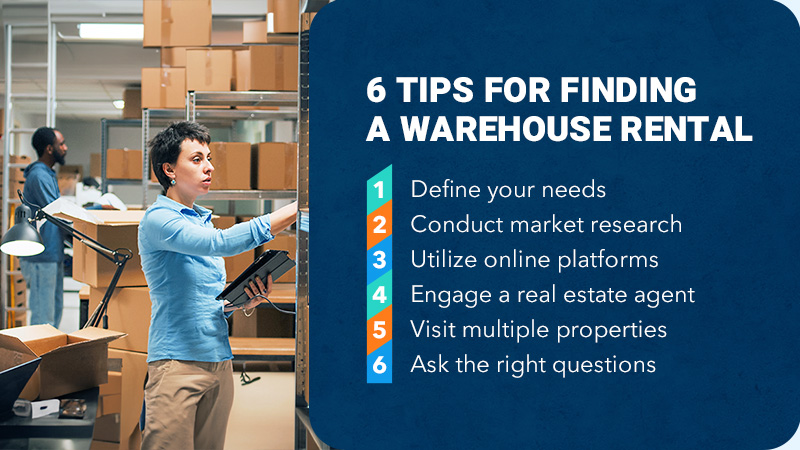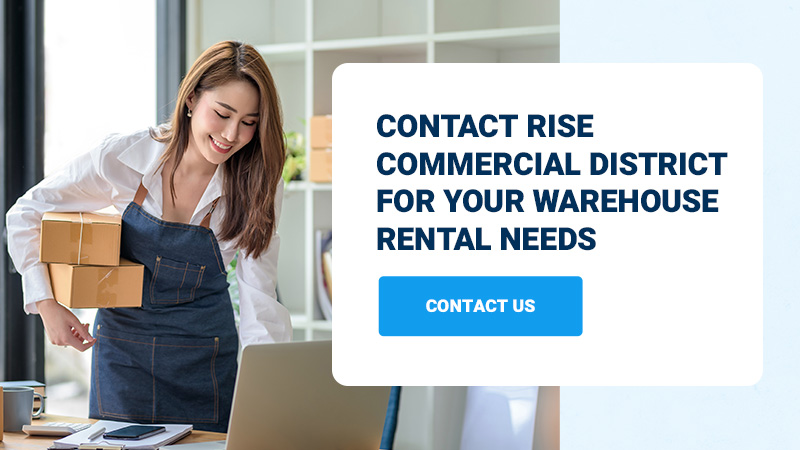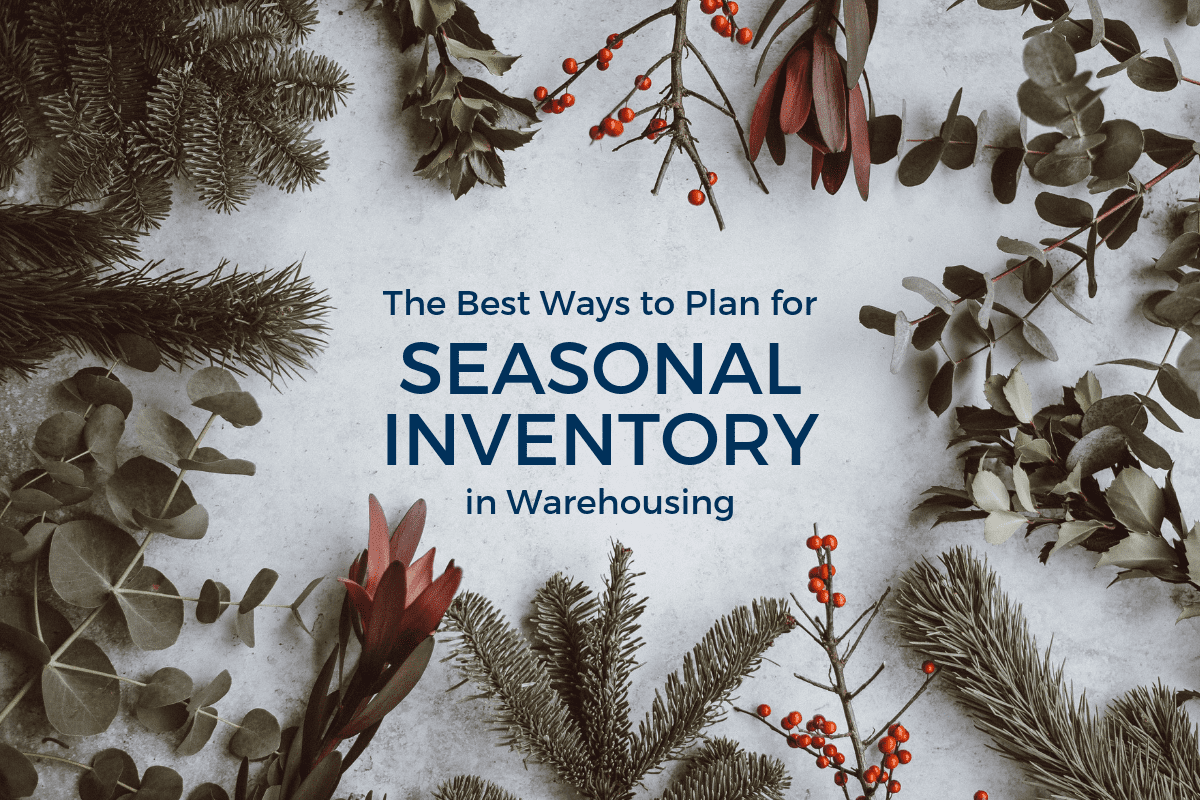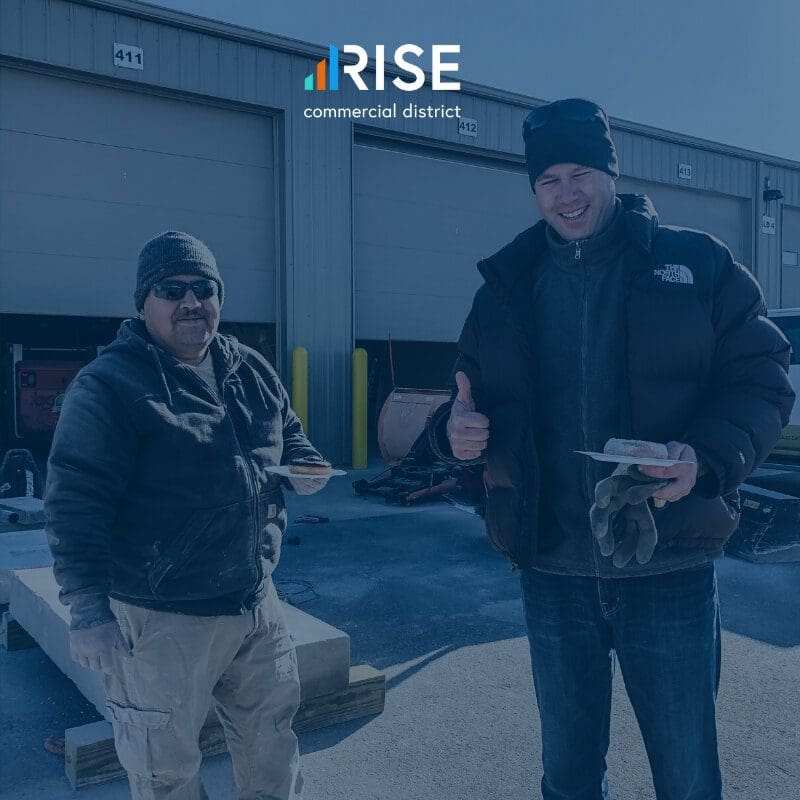- What Is Commercial Warehouse Rental?
- The Benefits Of Warehouse Rental
- 7 Top Warehouse Rental Considerations
- 6 Tips For Finding A Warehouse Rental
- Warehouse Leasing Guide
- How RISE Commercial District Can Help
- Contact RISE Commercial District For Your Warehouse Rental Needs
Renting a warehouse for commercial operations can be challenging, but knowing how to rent a warehouse effectively can simplify the process. This guide provides essential information to help you navigate your search for the ideal space.
You’ll discover key considerations, such as assessing your storage needs, researching optimal locations, and understanding rental costs. Additionally, we’ll cover what to do once you find a suitable warehouse to ensure a smooth transition for your business.
What Is Commercial Warehouse Rental?
Commercial warehouse rental involves leasing or renting warehouse space for business purposes. For example, a company can rent a warehouse for storage, distribution and inventory management. This type of rental can serve various industries, including retail, manufacturing, logistics and e-commerce. It allows businesses to optimize their operations.
The Benefits of Warehouse Rental
Renting a warehouse offers many advantages for businesses:
- Cost-effectiveness: Renting requires less upfront capital compared to purchasing property, allowing you to allocate resources elsewhere.
- Flexibility: Renting offers flexibility as the business grows. For example, you can rent additional space to scale your business or invest in short-term leases for project-based needs.
- Access to prime locations: Renting allows you to choose a desired location that may be too costly to purchase. Situating your business in a well-connected area can enhance operations.
- Operational convenience: Some rental warehouses are equipped with essential features, such as office spaces, security systems and internet connection. These capabilities allow you to conduct operations more conveniently.
- Tax advantages: Rent payments can often be deducted as operational expenses, potentially resulting in tax benefits for your business.
- Risk management: Renting can minimize susceptibility to market fluctuations and property depreciations. You can relocate or change operations without the complications of selling the property.
- Focus on core business: You can outsource property management and maintenance and concentrate on your primary objectives. This strategy can reduce the distraction of real estate issues.
Taking advantage of these benefits positions your company to stay competitive.
7 Top Warehouse Rental Considerations
Several factors come into play when renting a warehouse:
- Location: Choose a strategic location, considering proximity to suppliers and customers. For example, being near major highways, ports, or city centers can enhance visibility and accessibility.
- Size and layout: Determine the amount of space you need based on the purpose for renting and future growth. Prioritize layouts that facilitate workflows or designs that support operational needs.
- Duration: Consider how long you need the property. For instance, do you want to rent short-term to support immediate business needs or long-term to serve ongoing activities? Short-term leases offer flexibility, whereas long-term leases provide stability.
- Cost and budget: Forecast operating budgets, factoring in proposed monthly rent and other expenses like taxes, insurance, maintenance and utilities. Compare with similar properties to determine whether the costs make investment sense.
- Amenities and features: Choose a property with useful amenities like Wi-Fi, lighting, water, security systems and bathroom facilities. If you need extra equipment or machinery like forklifts, check whether the owner can make the necessary arrangements.
- Legal considerations: Ensure the terms of the lease agreements are favorable and reflect your intentions. Also, consider regulatory requirements, such as the zoning, environmental protection and safety laws, to determine whether the property fits the intended purpose. Finally, conduct legal due diligence before completing the transaction.
- Future growth opportunities: Consider whether the warehouse can accommodate future growth. Are there expansion options? Can you lease an adjacent space? Also, research the local market trends to ensure the area has growth prospects.
6 Tips for Finding a Warehouse Rental

Finding the ideal property can be daunting, but the right approach can streamline the process. Here are some warehouse rental tips:
- Define your needs: First, identify your business’s operational needs. Do you require specialized storage conditions? Do you need an office space? What is the ideal size? This assessment can increase your return on investment.
- Conduct market research: Research the local market to understand rental prices, demand and available properties. Observe where your competitors are located and whether being near them can give you strategic advantages.
- Utilize online platforms: Search real estate websites and local listings to find available warehouses. You can also join industry-specific forums and social media groups where warehouse listings are shared.
- Engage a real estate agent: Consider hiring a real estate agent who specializes in commercial properties. They can provide valuable insights and access to listings that are not publicly available.
- Visit multiple properties: Visit multiple properties to assess the conditions, layouts and suitability for your operations. Remember to keep detailed records of each property, including the pros and cons.
- Ask the right questions: Inquire about the landlord’s history and reputation. A responsive and responsible landlord can significantly impact your rental experience. Clarify who is responsible for maintenance and repairs, and understand the process for reporting issues.
Warehouse Leasing Guide
Commercial leasing requires careful consideration and planning. Here is a step-by-step guide on how to rent a warehouse to help you navigate the complexities.
1. Understand the Types of Commercial Leases
There are different types of commercial lease agreements:
- Gross lease: The landlord covers the operating expenses, including utilities and maintenance. Gross leases are simple, but the rent can be higher compared to net leases.
- Net leases: Depending on the type of net lease, the tenant may have to cover operating costs, insurance or property taxes — or all of the above. The available options include single, double and triple net leases.
- Modified gross leases: This lease type combines gross and net leases. The landlord and tenant share some expenses.
Learning the differences can help you choose the best option.
2. Conduct Due Diligence
Conduct due diligence to determine issues like title defects. Also, check the local zoning ordinance to ascertain whether the permitted use fits your business needs. Lastly, determine whether the landlord complies with other statutory requirements, such as tax and environmental laws.
3. Submit a Letter of Intent (LOI)
An LOI outlines the terms of a potential agreement between parties in a real estate transaction. It contains details such as the proposed rent, duration and lease terms. Some landlords have standard lease agreements, but submitting an LOI facilitates negotiation.
4. Review the Lease Terms
Review the terms carefully when you receive a rent agreement. Pay close attention to the aspects related to rent, duration, maintenance and responsibilities. Also, ensure you understand the terms for renewal and termination that may apply if you need to vacate early.
5. Negotiate Lease Terms
Negotiate the terms that may be unfavorable or unclear. Aim for a balance that protects your interests while being fair to the owner. You may also negotiate additional benefits, such as rent-free periods or allowances for improvement.
6. Execute the Rental Agreement
Sign the lease agreement once all terms are agreed upon. Ensure you have a copy of the lease for your records. Provide any required documentation, such as insurance certificates or business licenses.
7. Prepare for Occupancy
Organize logistics for moving your inventory and equipment into the new warehouse. Ensure the warehouse is set up to maximize efficiency and support your operational needs.
How RISE Commercial District Can Help
RISE Commercial District makes small warehouse rental affordable and accessible to businesses of all sizes. Our facilities include storage, office and flex spaces with all the necessary amenities. You get access to our forklifts for shipping and receiving, accessible business Wi-Fi, 24/7 security, and utility-inclusive leases. We also offer flexible terms to suit various demands.
RISE Commercial District has a team of trusted professionals to help you find the perfect commercial warehouse space. We dedicate time to understand our client’s needs and leverage our resources to exceed expectations. We have 13 locations across the Midwest and continue to expand into other areas.
Contact RISE Commercial District for Your Warehouse Rental Needs

SMall warehouse rental is simple with RISE Commercial District. We have tremendous experience in the industry and are ready to help you develop practical strategies. We pride ourselves on providing clean facilities and have top professionals to ensure operations move smoothly. Our team is always available to support you. Want to learn more? Contact us now!



